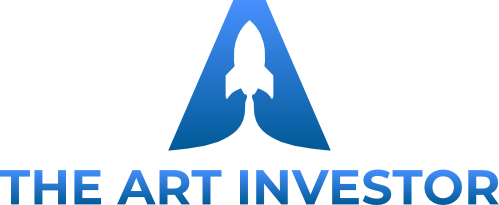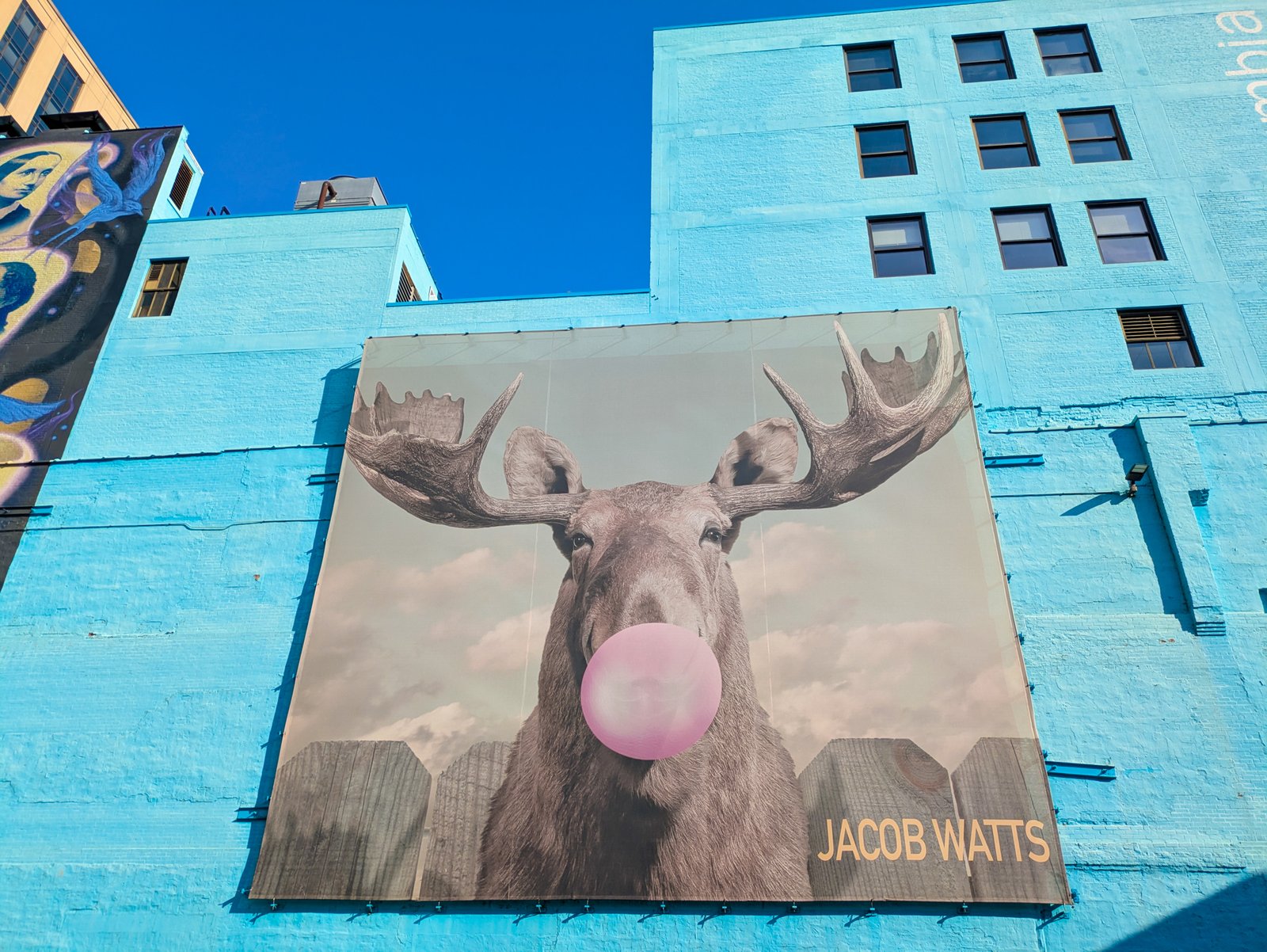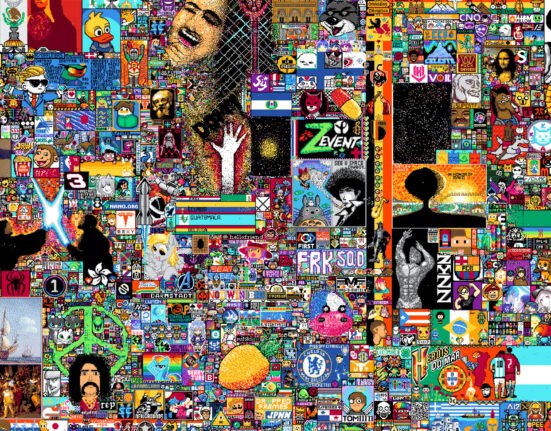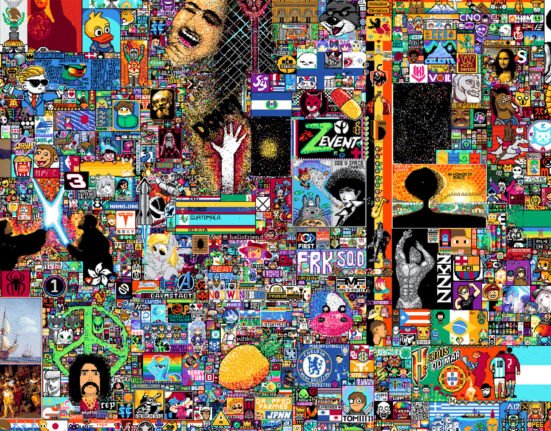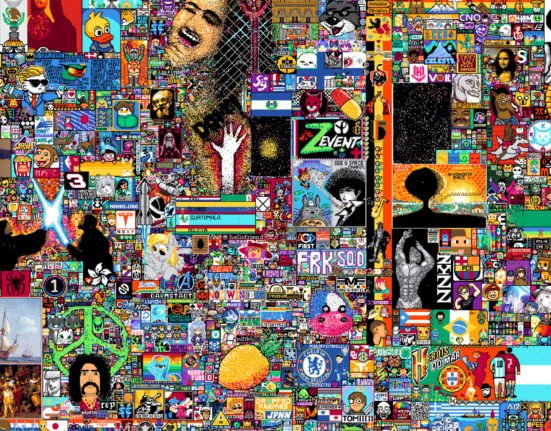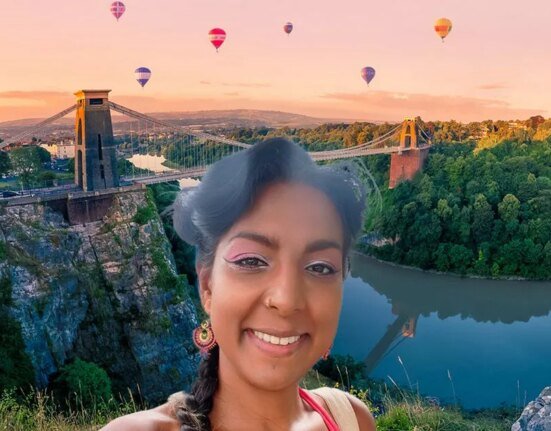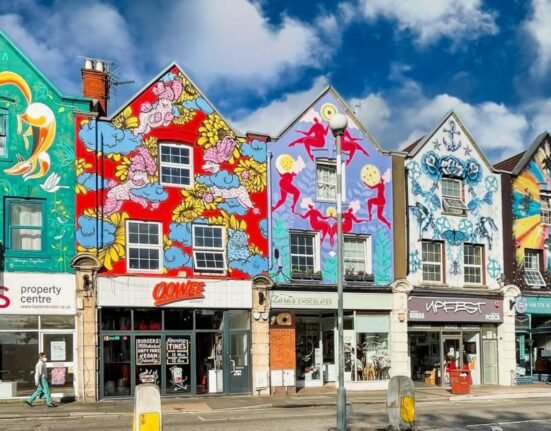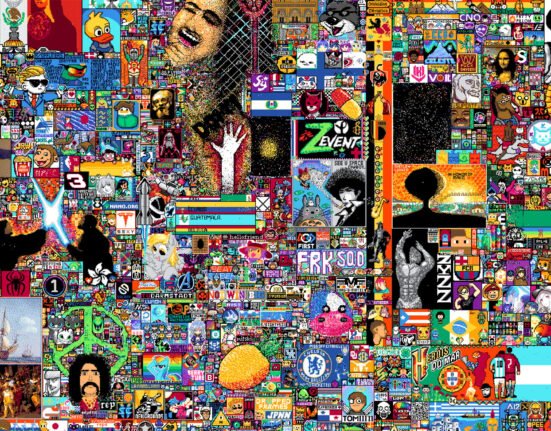
I was going to kick this off with a fun anecdote about my daughter walking into my office to ask whether I knew there was a guy trapped inside the Bean, followed by my inevitable dive into the Man in Bean movement (including Sarah Cascone’s wild dissection). Anish Kapoor’s Cloud Gate is the kind of artwork people love to hate while still lining up to slap their greasy palms on it to get the same warped selfie everyone takes. And while I usually enjoy a good dunk on that sort of thing, it feels a little tone-deaf given what’s happening in the Windy City right now—from ICE patrols to the arrival of National Guard troops.
The idea that Trump could deploy those troops in Chicago—invoking the Insurrection Act in the process—feels dystopian and doesn’t track with my experience of the city at all. Does Chicago have crime? Yes, Chicago has crime. So does every city. More people, more problems. Is Chicago, as the president has claimed, the “world’s most dangerous city”? Please. Not even close. It’s just a city—and from everything I saw during a trip that took me from the Loop to Streeterville, from East Village to Washington Park and the Fulton Market District—it’s a pretty chill one. Sure, I only saw a sliver, but to echo the words of U.S. District Judge April Perry, I saw nothing resembling a “danger of rebellion.”
What I do see while I’m here for Chicago Exhibition Weekend (CXW) is beautiful in the way most urban places are beautiful—full of hard edges paired with softness and united by the widely held conviction that art is the solution to a range of challenges. Chicago’s artists—and their champions, from patrons to gallerists to curators—are as open as they are unfiltered. When I ask Scott Speh, founder of Western Exhibitions, what makes the Chicago art scene different from, say, New York or L.A., he’s quick to tell me how much he hates that question, then launches into a perfectly clear-eyed answer: “I think everywhere, people want to put on good shows. It doesn’t matter what city they’re in, they want to put forward interesting artists.”


That’s what he’s been doing for 21 years (“Chicago would be a far less interesting art city if Scott wasn’t doing what he was doing,” artist Stan Shellabarger told The Chicago Reader in 2024), and he’s in good company. Speh might resist boiling it all down, but if I had to try, I’d say Chicago’s is a scene grounded in and by the people who are in the thick of it. “In Chicago, there’s a really good ecosystem because it’s not too small and it’s not too big either,” Sibylle Friche, Document gallery partner, tells me. “You don’t get bored—there’s always enough going on.”
Enough, and then some—as is the case with Chicago Exhibition Weekend, now in its third year. Around 50 galleries and creative spaces citywide mounted shows and everything from panel discussions and artist meet-and-greets to collector tours and an art-and-tennis mixer. The whole thing is the brainchild of Abby Pucker, Gertie founder and Pritzker family scion—yes, that Pritzker family. But despite her association with big bucks and big names (Illinois Governor JB Pritzker is a cousin), Pucker is—as I find out in conversation after conversation, including with the woman herself—simultaneously down-to-earth and committed to lifting others up.
I’m here for CXW, of course, but also to figure out what makes Chicago’s art world tick. Pucker deserves serious credit for rallying next-gen patrons and collectors through Gertie’s EarlyWork program of curated cultural events. Still, she’s one voice in a glorious chorus of artists, curators and civic-minded supporters—all of whom, it seems, are ready to invite outsiders like me in.
Day 0
It’s just around lunchtime when I touch down at O’Hare, but I’m thrilled to find my room at Chicago Athletic Association already ready when I arrive after an uneventful ride on the Blue Line. I can see Cloud Gate from here, or at least glints of it between the leaves of Millennium Park’s many trees, which means I’m also near Jaume Plensa’s ever-smiling crowd-pleaser, Crown Fountain. It’s hours before I need to be anywhere, and my home base is just steps from the Art Institute of Chicago (the second-largest art museum in the United States, after New York’s Metropolitan Museum of Art), which feels like the perfect way to start an unfamiliar city fling with art.


In the elevator, someone cheerfully asks if I’m headed out to see the Bean. “Sure am,” I answer—and I guess I’m just that suggestible because suddenly I feel compelled to make that my first stop. Close up, it’s filthy, covered in smeary handprints and streaks, but from a distance, framed by the city skyline, it’s pure sculpture drama. I take selfies from afar but resist the urge to touch it since I left my sanitizer back in the room—rookie mistake.


On a normal trip, I’d budget at least five hours for the Art Institute, but this isn’t a normal trip, so I decide to focus on the heavy hitters: Edward Hopper’s Nighthawks. Van Gogh’s The Bedroom. Seurat’s A Sunday on La Grande Jatte. Grant Wood’s American Gothic. My all-time favorite Cézanne, Basket of Apples. I’m waylaid early on by the Elizabeth Catlett show, “A Black Revolutionary Artist and All That It Implies,” a fantastic career survey on view through early next year and absolutely worth the flight alone. In Gallery 262, everyone is clustered around Nighthawks, which is probably among the least interesting paintings there—though it’s definitely bigger than you’d expect. Far more captivating are Peter Blume’s weirdly brilliant The Rock (commissioned for Fallingwater but rejected for being too big) and Kay Sage’s deliciously desolate In the Third Sleep. There’s even an early cubist-expressionist Pollock, which feels like spotting a celebrity before their glow-up.


And so it goes. The Art Institute of Chicago is home to paintings we’ve all seen a hundred times on mugs, tote bags and in movies—you can absolutely have your Ferris Bueller moment in front of the Seurat—but it’s the lesser-known gems that really sparkle. There’s a stellar selection of Georgia O’Keeffe’s works (Ballet Skirt or Electric Light is a standout) and Alma Thomas’ Starry Night with the Astronauts. Other highlights: William Zorach’s Summer, Marsden Hartley’s Movement, Elizabeth Sparhawk-Jones’ Shop Girls and Mary Cassatt’s The Child’s Bath.


Time-bound as I am, I feel like I’m jogging through the galleries. (Fun fact: Large as the museum is, less than 20 percent of the collection is on display at any given time.) I pause for a late lunch at the café—great food—and sit in the garden for a charming little reset before diving back in. Monet’s stacks of wheat remind me what repetition can achieve. There are Van Goghs here you haven’t seen on a million mugs, but don’t skip the Pissarros. I breeze through the Greek, Etruscan, Roman and Egyptian galleries but somehow miss the entire Asian art collection. I cap off my visit at Marc Chagall’s America Windows and leave feeling artistically overfed yet hungry for more.


After a stop back at the hotel, where I freshen up and check out Andi Crist’s Precautionary Measures, a site-specific installation that transforms symbols of caution and containment into a new visual language (then installed at Chicago Athletic Association), I hop on the train toward 400 N. Peoria. It’s the hub of CXW and the site of “Over My Head: Encounters with Conceptual Art in a Flyover City, 1984–2015,” a special exhibition curated by Gareth Kaye and Iris Colburn and presented by Abby Pucker’s Gertie.
The weather is perfection—so close to ideal it’s practically invisible. But I’m off to an inauspicious start. My GPS goes haywire, and I’m spinning around River North in a mild panic, trying to figure out where the hell I am. And once I do, I’m unfashionably early—as in, they’re-still-setting-up-the-bar early. But someone lets me in, and the bartenders take pity on me, which is how I score a private preview of the show. I spend an embarrassingly long time standing in the room where Jordan Wolfson’s hypnotic Perfect Lover (2007), one of my favorite works, is playing on a loop.


As the gallery fills, I’m still feeling untethered. I spot Tony Karman. I eavesdrop on conversations, playing a game of Artist, Collector or Scenester? I linger by Wendy Jacob’s Untitled (1988), watching it breathe, then lose myself in Rashid Johnson’s Remembering D.B. Cooper (2013), until Ellen Kaulig, chief of staff at the Chicago Reader, saves me from myself by introducing me to Pucker. In a relatively quiet spot under the stairs, she tells me how Chicago Exhibition Weekend evolved over three years and where the idea for “Over My Head” came from.
“It’s a bit of a double entendre—being a flyover city, right? People don’t often attribute movements like conceptual art to Chicago, but it is an amazing nerve center of that,” she says, calling the planning phase a whirlwind. “We talked to these absolute icons. People like Karsten Lund, Helen Goldenberg, Laura Paulson, John Corbett and Jim Dempsey… just people who have been integral to this area for so many years.” Chicago’s art elite were, she said, excited to share, and the resulting show collected work from Molly Zuckerman-Hartung, Dara Birnbaum, Rosemarie Trockel, Martin Puryear, Tony Lewis and others.
“They don’t think so highly of themselves that they’re detached from reality,” she adds. “They’re around. I think sometimes that might work to our detriment, because it’s hard to brand something as cool when it’s so inviting—but it’s fucking cool to be invited.”


That word—invited—comes up again when I talk to Chanelle Lacy, Gertie’s director of art initiatives, about the crossover between CXW and EarlyWork: “We want to lower barriers to entry. We try to demystify things because once you actually get into it, it’s not that scary. The art world just looks a little intimidating from the outside. We want to expose people to the finer side of things and be a lifeline. And everything is very serious—it’s just about making it more approachable, so people feel invited into the experience.”
The exhibition dinner is where I meet Friche, along with Carla Acevedo-Yates (if the name’s familiar, it’s because she’s on the documenta 16 curatorial team), several dealers and a cadre of arts-friendly businesspeople and politicians. I stay and schmooze for as long as I can before exhaustion sets in.


Day 1
I’d planned to follow one of the curated routes that the CXW team had Chicago artists, gallerists and creatives put together, but last night Friche hand-drew me a one-of-a-kind mapped itinerary—and really, how could I possibly say no to that? But Chicago’s art museums don’t open until 10 a.m., and the galleries open even later, so I decide to wander toward Lake Michigan. I get sidetracked by the absolute unit of a fountain in the distance—it’s Clarence F. Buckingham Memorial Fountain—and I start heading that way, thinking it can’t be too far. And it’s not, technically, but its sheer scale plays tricks on your senses. I know I’m close when I pass Turtle Boy and Dove Girl and the North Rose Garden, which must be stunning at the height of summer, and then I keep going for a quick peek at Magdalena Abakanowicz’s leggy Agora.


I haven’t even officially started my day, but I’ve already clocked more than a mile—according to Friche’s map, in the wrong direction. After an about-face, I get plenty of lake views on my three-mile walk to the MCA Chicago, which is showing “City In A Garden: Queer Art and Activism” and “Wafaa Bilal: Indulge Me,” along with “Collection in Conversation with Pablo Helguera” across all three floors of the museum’s stairwell galleries. Like the Art Institute, MCA Chicago is a feast, but a much more digestible one. You can see everything in a couple of hours, which is ideal because my weekend itinerary is threatening to become an endurance sport.


First stop: Patron Gallery for Bethany Collins’s “DUSK,” which is nuanced but underwhelming as presented—or maybe I’m just too overstimulated post-museum to process it properly. Next up: Western Exhibitions, Document, Volume Gallery and David Salkin Creative, which all share a floor at 1709 West Chicago Avenue. Friche is in, and she tells me the neighborhood is a hub for emerging contemporary art, but you’ll also find heavy-hitters like Mariane Ibrahim Gallery and Corbett vs. Dempsey. “It definitely concentrates a lot of the scene,” she says. “And it feels pretty supportive—we each have our own identity. I think it’s hard to find programs in Chicago that resemble each other. I’m not saying anything negative about New York, but sometimes you go to Chelsea and see the same kind of painting shows over and over. I feel like here, you don’t have that.”


Unlike Scott Speh, she’s more than happy to talk about what makes Chicago’s art scene unique: “Because our overhead is manageable, it’s more accessible to open spaces and experiment. Eventually, you get a bit more constrained by the commercial aspects—if you want longevity, you do need to sell some art. That affects your choices. But there’s still a bit more breathing room here than in the coastal cities, given how unaffordable things have become in San Francisco and New York.”


I linger over Kiah Celeste and Gordon Hall’s work at Document and Journie Cirdain’s “The Gloaming” at Western Exhibitions before briefly popping into “Porfirio Gutiérrez: Modernism” at Volume Gallery. Then I’m back out on the streets, where I’m spoiled for choice but already flirting with art fatigue. Sadly, Monica Meloche gallery isn’t opening its Luke Agada and Braxton Garneau show until tomorrow, so I make my way to Mariane Ibrahim for “Yukimasa Ida: Flaming Memory.” It is, in a word, transcendent. I stand for a long time in front of each painting, hypnotized by the massive brushstrokes and thick layers of paint that blur into half-remembered faces—like fragments of a dream fading faster than I can hold on.
I think about squeezing in a few more galleries, but once again, I’ve grossly underestimated Chicago’s distances—and I’m hitting the wall. In a way, it’s a happy accident: I return to my hotel to the news that the iconic Agnes Gund has passed away, and her obit is waiting in my production queue. I edit, publish and then dash out to gape at the Chicago Picasso before hopping on the train to yet another neighborhood: Washington Park.


I’m here to see a different side of the art scene and join the large crowd gathered at the Green Line Performing Arts Center for a tour of the imagined Washington Park Public Art Corridor. In several batches, a trolley ferries us to Amanda Williams’ Other Washingtons at 51st and S. King Drive, the future site of Breath, Form & Freedom, created by the Chicago Torture Justice Memorials Foundation to honor victims of police torture, and Arts + Public Life’s Arts Lawn for a preview of Yvette Mayorga’s City Lovers in Paradise. I learn more about Chicago’s recent history in a few hours than I could’ve gleaned from a week of reading—and not all of it’s pretty. Back at the arts center, there’s live music, dance and collaborative art-making with artist and teacher William Estrada, who’s brought his Mobile Street Art Cart Project to the Art Lawn.
When I ask Estrada about the art scene, he’s frank. “There are a lot of spaces where not everyone is welcome, and that’s the worst part of it,” he says. “But the best part is that there’s a lot of art in Chicago, and you can see it across 77 neighborhoods. That’s the part I get really excited about—because you get to experience different art in different communities, and actually engage in conversations about what that art means and who made it with the folks who are being affected by it or get to experience it directly.”


And that’s exactly why I’m here—not just for CXW (which is fantastic) or the city’s world-class museums (also fantastic) but to understand what makes Chicago’s art pulse so distinct. Back in the Loop, I stroll around Millennium Park waiting for a text from Wilma’s letting me know my barbecue is ready. The evening is gorgeous—warm, breezy and humming with life. Kids are splashing in Crown Fountain, musicians are playing on the sidewalks, and the whole scene radiates that beautiful combination of grit and charm. I can see why so many people love it here.
Day 2
If you have limited time in Chicago—say, you’re breezing in for a weekend of art and, like me, you’ll be operating without wheels—you need to think hyper-locally. This is a city of neighborhoods, each with its own cultural flavor and art offerings. Hyde Park has the Smart Museum of Art, the Renaissance Society, Hyde Park Art Center and the Logan Center Gallery (plus the Griffin Museum of Science and Industry, the Institute for the Study of Ancient Cultures Museum and the DuSable Black History Museum in nearby Washington Park). Lincoln Park has the DePaul Art Museum and Wrightwood 659. Ukrainian Village and West Town boast a cluster of commercial galleries, along with the Ukrainian Institute of Modern Art and Intuit Art Museum.


If there are specific museums or galleries you’re determined to hit, book a spot somewhere central. Because if you’re coming from New York and assuming you’ll just zip between neighborhoods like you’re downtown, you’re in for a rude awakening. Chicago is about ten times the size of Manhattan in terms of land area—which is why, during my final hours in town, I’m speedwalking the South Loop’s Wabash Arts Corridor. (Sidenote: I consider myself a hotel gym connoisseur, but I racked up so many steps during my two-day stay that I never once made it to the Chicago Athletic Association gym. No regrets.)
Crisscrossing streets so eerily empty of cars they feel post-apocalyptic, I admire murals not just on walls but also on doors, alleyways and parking lots. Initiated by Columbia College Chicago in 2013, the Wabash Arts Corridor project has brought more than 100 murals to the neighborhood, including We Own the Future by Shepard Fairey. I’m especially charmed by Marina Zumi’s Impossible Meeting and the candy-colored Moose Bubblegum Bubble by Jacob Watts, and wish I had more time to wander—but I need to get back to Chicago Athletic Association for my final art experience of the trip: the “City as Platform” breakfast conversation.


On my straight-line power walk back to my hotel, I marvel at Chicago’s abundant parking—a downright shocking sight for a New Yorker—and pause to peer into the windows of Elephant Room Gallery, one of many I didn’t make it to, which is showing Darin Latimer’s solo exhibition “Rhinoceros.” Other things I don’t do in Chicago: participate in the “Throw your phone into a body of water!” activation by Weatherproof, which invited art lovers to toss their phones into any handy body of water on September 19, 20 or 21 whenever the numbers on a clock added up to four in military time (e.g. 0400 or 2200)—though I was sorely tempted. Attend the Improvised Sound Making at The Franklin. See “Alex Katz: White Lotus” at GRAY. Visit the National Museum of Mexican Art and the National Veterans Art Museum.


Before the talk—an engaging conversation between Kate Sierzputowski (artistic director of EXPO CHICAGO), Nora Daley (co-chair of the Chicago Architecture Biennial), Christine Messineo (Frieze director of Americas) and, no surprise, Abby Pucker, who greets me warmly, by name, when I check in. As Sierzputowski notes when the convo kicks off, the panel “reflects the best of what Chicago has to offer: collaboration across sectors, deep civic commitment and a shared mission to place the city’s cultural work on a global stage.” Daley calls CXW a “cultural palooza” and declares that “Chicago shows up,” which is something I see in action, over and over, during my short time here. “I think it’s who’s in the room at these dinners is what makes this work,” Sierzputowski agrees—whether that’s gallerists, artists, curators, museum directors and civic leaders or, as Pucker reminds us, engaged corporate entities committed to supporting the arts in Chicago.


“The creative economy contributes massively to city revenues, yet the people in power often don’t see or understand it,” she says. “We’ve seen perception hurt Chicago. Every city has problems—but if the media only amplifies those, we lose people. Art and culture can bring them back.”
Ironically, the end of the conversation marks the close of my 48 hours of art in Chicago. As I ride the Blue Line back to O’Hare, mulling over everything I’ve experienced, it hits me: as thrilling as it is to be here during Chicago Exhibition Weekend, there’s just too much on the CXW agenda and not enough time to do it. What I experienced in two days was barely a teaser of what this city has to offer. So with that in mind, Abby, if you’re reading this, I have three words for you: Chicago Exhibition Week. Think about it.


